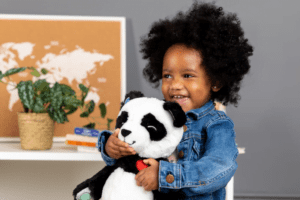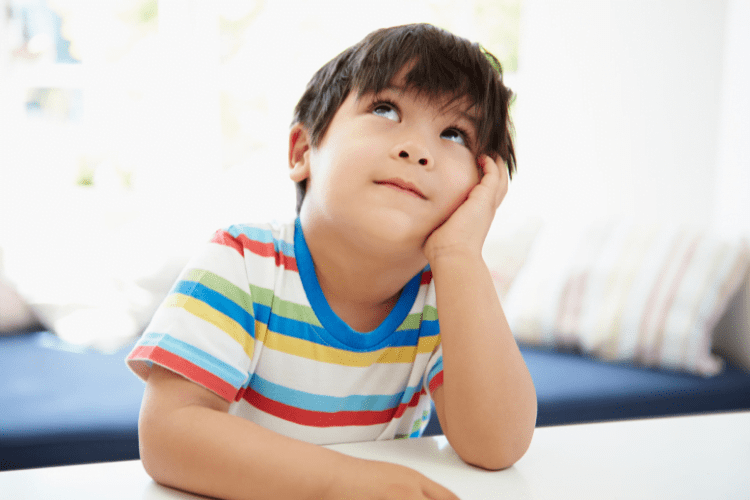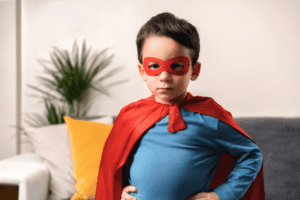
The Importance of Transitional Objects in Early Childhood
As a longtime educator of toddlers and twos and a doctoral student studying transitional phenomena and object relations, I have had the distinct pleasure and
Coming Soon – Reserve Yours Now

From the time they’re born until they reach adulthood, a child’s brain goes through a lot of changes! As a parent, you may have questions about how your child’s brain develops.
How is a child’s brain different than an adult’s? How can mental health affect a child’s brain development? What can parents do to support healthy brain development?
This guide answers all of those questions and more! We’ve even included a child brain development timeline, which can answer all of your questions about the different child brain development stages. Read on to learn more.
As a parent, you might wonder, “At what age is a child’s brain fully developed?” Well, believe it or not, your child’s brain will continue to grow and develop until they turn 25!
While most of the rapid brain development and growth happens before the age of 5, your child’s brain will continue to develop well into early adulthood.
Let’s start at the beginning and go over the child brain development timeline
From the moment a baby is born, their brain is already growing and rapidly taking in new information. By the time they reach the age of 1, a baby’s brain will be about half of the size of an adult’s brain.
A baby is born with roughly 100 billion neurons (aka brain cells). The connections between those neurons are called synapses, and those synapses allow the brain to form new connections in real-time. Each time a baby has a new experience, hears a new word, or sees something in their environment, their brain forms new connections and new synapses are formed.
In toddlerhood, a child’s brain is continuing to form new connections with each new experience. This is called neuroplasticity, which refers to the brain’s ability to adapt and change based on external stimuli and experiences. By age 2, your toddler’s brain has about one quadrillion or 1,000,000,000,000,000 synapses – that’s a lot of brain connections!
In addition to new synapses forming, some brain connections that go unused will fade away. This is a completely normal part of brain development called synaptic pruning. You can think of it as the brain’s way of clearing out space and making room for new connections to grow.
By the time they reach age 5, a child’s brain is about 90% of its adult size. During this developmental stage, your child’s brain will continue to grow and develop. Two parts of the brain that see the most growth at this stage are the frontal lobe and the temporal lobe. The temporal lobe is the part of the brain that sits around the ears and is involved in storing new memories and processing sounds and language. The frontal lobe sits at the front of the brain, around the forehead, and is responsible for emotion regulation, problem-solving, and decision-making.
As a child enters adolescence, their body begins producing sex hormones – like estrogen and testosterone – and those hormones begin to shape their brain development. One of the biggest things that happens in the brain during adolescence is that two important brain systems develop at different times – specifically, the limbic system develops much faster than the prefrontal cortex. The limbic system is responsible for emotion processing and sensation seeking, while the prefrontal cortex handles rational decision-making and impulse control.
The mismatch in the development of these two important brain systems is why teenagers seem to engage in more risk-taking and emotional behaviors than adults – the part of their brains that evaluates consequences and impulses isn’t fully developed yet!
Once a child reaches adulthood, their brain is not done growing! While most brain development is complete around this time, the prefrontal cortex will continue to develop until about age 25. By the time their brain development is complete, the average adult will have about 500 trillion synapses, about half as many as they had at age 2.
Whether your child is a toddler or a teenager, there are so many things that you can do to support healthy brain development!
One of the biggest thing that supports a child’s brain development is having positive, consistent, loving relationships with caregivers. Unfortunately, some children do not grow up with reliable adult caregivers, which can create toxic stress that negatively impacts their mental health and brain development. When your child knows that they can rely on adults to be there when they need them, this creates a safe and loving environment where their brain can flourish and grow.
Parents can also make sure to provide responsive and active engagement and interaction. This could be something as simple as talking to your baby or child throughout the day (even before they’re able to speak!) or turning mealtime or bathtime into an interactive, brain-building activity through consistent interaction and engagement.
Parents can also find ways to engage their children in more structured, interactive activities. This might include things like reading a book together and asking your child lots of questions during the process.
Mindfulness activities can also be turned into brain-building exercises. Mindfulness is a great practice for all ages, but especially for children whose brains are still developing and growing.
As mentioned above, neuroplasticity means that each new interaction with your child helps to create new connections in their brains. Mindfulness can be a great way to support neuroplasticity!
Mindfulness is an established practice with a lot of research behind it. Researchers have found that mindfulness can help children feel less stressed and that mindfulness activities can train children’s brains to pay better attention in school. Researchers have even found that mindfulness can help increase brain connections between different areas of the brain.
If you’re interested in trying out some mindfulness activities with your child, Pause With Panda is a great option to consider. Pause with Panda has bite-sized mindfulness exercises that are specifically designed to help children practice mindfulness, supporting brain growth both now and in the future

Share this article:

As a longtime educator of toddlers and twos and a doctoral student studying transitional phenomena and object relations, I have had the distinct pleasure and

Imagine that you’re looking for a place to hide some cookies so they don’t get eaten by someone else. You sneak into the kitchen when
Copyright © 2022 Pause with Panda, Inc. All Rights Reserved.